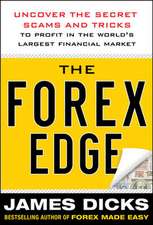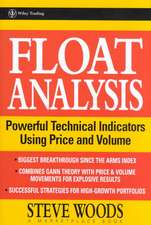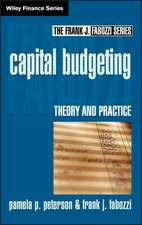Cuprins
Preface xiii
Acknowledgments xv
1 What Is the FOREX? 1
Introduction 1
FOREX Defined 12
A Brief History of the FOREX 13
Free-Floating FOREX Market 13
Major FOREX Participants 14
2 More FOREX 15
Currency Pairs 15
Recommended Currency Pairs 16
Why Trade the FOREX 19
Volume in the FOREX 19
Analyzing the FOREX 23
How Profits Are Made 23
The FOREX as a Two-Way Market 25
3 Forecasting the Market 29
Fundamental Analysis 29
Technical Analysis 32
Fundamental versus Technical Analysis 33
4 Currency Options 35
Currency Options Introduction 35
Options Pricing 36
Advantages of Trading Options 37
European and American Options 37
Exotic Options 38
Lock in Profits 40
Accelerate Your Profits 41
5 Creating a Workstation for Trading 43
Workstation Location 43
Trading Computer and Accessories 44
Internet Connection 45
Trading Software Programs 45
Continuing Education 486 Fundamentals of Trading 51
Introduction to Trading Theory 52
Trends Defined 53
Trend Cycles 53
High-Probability Trading 55
Sideways, Nontrend Strategy: Wait for Strong Trends 55
Uptrend Trading Strategy: But at Dip Bottoms 55
Downtrend Trading Strategy: Sell at Rally Tops 58
Symmetrical Triangle 58
Ascending Triangle: A Bullish Continuation Pattern 63
Descending Triangle 65
The Falling Broadening Formation 67
Support Breakdown or Resistance Breakout 67
The Double Bottom 68
Head and Shoulders (Crown) 70
7 Economic Fundamentals 73
Introduction 73
Economic Indicators 74
Inflation Indicators 76
Employment Indicators 78
Consumer Spending Indicators 78
Leading Indicators 79
8 Introduction to Technical Analysis 81
Technical Analysis Defined 81
Technical Analysis Assumptions 82
Bar and Candlestick Charts 83
Technical Analysis Terms 86
Market Patterns: Uptrends, Downtrends,and Sideways Trends 87
Support and Resistance 95
Moving Averages 95
9 Advanced Trading Charts and Indicators 103
Tools for Technical Analysis 104
Bollinger Bands 104
Directional Movement Index (DMI) 107
Stochastic Indicator 107
Moving Averages (Simple, Weighted, and Exponential) 110
Moving Average Convergence/Divergence (MAC/D) 116
Momentum 119
Relative Strength Index (RSI) 119
Rate of Change (ROC) 122
Volume 122
10 Fibonacci Numerical Sequences and Elliot Waves 125
Introduction 125
Fibonacci Rectangles and Shell Spirals 127
Fibonacci Retracements 128
Fibonacci Extensions 128
Fibonacci Time 129
Fibonacci Circles 130
Elliot Waves 135
11 Money Management Principles 139
Trade with Sufficient Capital 140
Exercise Discipline 140
Be Patient and Persistent 141
Employ Risk-to-Reward Ratios 141
Follow Trading Rules 143
Accept Losses 144
Always, Always Use Stops 144
When In Doubt, Stay Out 145
Never Overleverage Your Account 145
Make Realistic Goals That Can Be Achieved within Reason 146
Always Trade with Money You Can Afford to Lose 147
Protecting Your Profits 147
Keep a Trading Log 147
12 Six Steps to Success 149
Identify Current Long- and Short-Term Trendsand Which Trend to Trade 149
Check News and Market Announcements 150
Identify Support an









